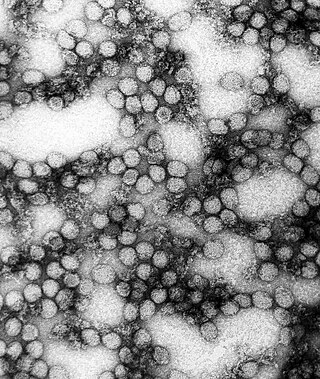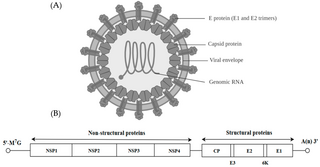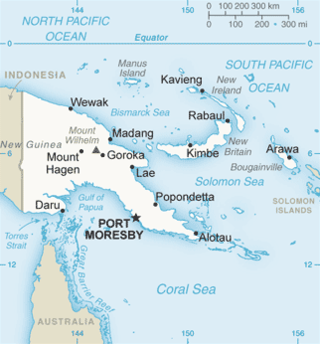This article needs additional citations for verification .(February 2024) |
This article contains a list of insect-borne diseases. They can take the form of parasitic worms, bacteria, protozoa, viruses, or the insects directly acting as a parasite.
This article needs additional citations for verification .(February 2024) |
This article contains a list of insect-borne diseases. They can take the form of parasitic worms, bacteria, protozoa, viruses, or the insects directly acting as a parasite.
Mosquitoes are vectors for a large number of diseases, the large majority being viral in nature. Mosquito-borne viruses fall into four major groups: Bunyavirales , Flaviviridae , Togaviridae , and Reoviridae . They can present as either arbovirus encephalitis or viral hemorrhagic fevers.
| Group | Presentation | Disease | Primary vector |
|---|---|---|---|
| Bunyavirales | Arbovirus encephalitis | La Crosse encephalitis | Aedes triseriatus (eastern tree hole mosquito) [1] |
| Bunyavirales | Arbovirus encephalitis | Batai virus | |
| Bunyavirales | Arbovirus encephalitis | Bwamba Fever | |
| Bunyavirales | Arbovirus encephalitis | California encephalitis | |
| Bunyavirales | Arbovirus encephalitis | Jamestown Canyon encephalitis | |
| Bunyavirales | Arbovirus encephalitis | Oropouche fever | |
| Bunyavirales | Arbovirus encephalitis | Tahyna virus | |
| Bunyavirales | Arbovirus encephalitis | Tete virus | |
| Bunyavirales | Viral hemorrhagic fever | Bunyamwera fever | |
| Bunyavirales | Viral hemorrhagic fever | Rift Valley fever | Culex spp [2] |
| Flaviviridae | Arbovirus encephalitis | Japanese encephalitis | |
| Flaviviridae | Arbovirus encephalitis | Murray Valley encephalitis virus | |
| Flaviviridae | Arbovirus encephalitis | Rocio viral encephalitis | |
| Flaviviridae | Arbovirus encephalitis | Saint Louis encephalitis | Culex pipiens (northern house mosquito), C. quinquefasciatus (southern house mosquito) [2] |
| Flaviviridae | Arbovirus encephalitis | Spondweni fever | |
| Flaviviridae | Arbovirus encephalitis | Usutu virus | |
| Flaviviridae | Arbovirus encephalitis | West Nile fever | |
| Flaviviridae | Viral hemorrhagic fever | Dengue fever | |
| Flaviviridae | Viral hemorrhagic fever | Yellow fever | |
| Flaviviridae | Viral hemorrhagic fever | Zika fever | |
| Togaviridae | Arbovirus encephalitis | Barmah Forest virus | |
| Togaviridae | Arbovirus encephalitis | Chikungunya | |
| Togaviridae | Arbovirus encephalitis | Eastern equine encephalitis | Culiseta melanura (black-tailed mosquito) [2] [3] |
| Togaviridae | Arbovirus encephalitis | Mayaro virus disease | |
| Togaviridae | Arbovirus encephalitis | O'nyong'nyong fever | |
| Togaviridae | Arbovirus encephalitis | Pogosta disease | |
| Togaviridae | Arbovirus encephalitis | Ross River fever | |
| Togaviridae | Arbovirus encephalitis | Semliki Forest virus | |
| Togaviridae | Arbovirus encephalitis | Venezuelan equine encephalitis virus | |
| Togaviridae | Arbovirus encephalitis | Western equine encephalitis virus | Culex tarsalis [4] |
| Reoviridae | Arbovirus encephalitis | Banna virus |
| Disease type | Disease name |
|---|---|
| Parasitic fly | Dermatobia hominis (Myiasis) |
| Parasitic worm | Dirofilariasis |
| Parasitic worm | Lymphatic filariasis |
| Protozoa | Malaria |
| Virus ( Bunyavirales ) | Lymphatic filariasis |
| Insect | Disease type | Disease name |
|---|---|---|
| Black fly ( Simulium ) | Parasitic worm | Mansonelliasis |
| Black fly ( Simulium ) | Parasitic worm | Onchocerciasis (river blindness) |
| Deer fly (Chrysopsinae) | Bacteria | Tularemia |
| Deer fly (Chrysopsinae) | Parasitic worm | Loa loa filariasis |
| Flea | Bacteria | Murine typhus |
| Flea | Bacteria | Plague |
| Flour beetle | Parasitic worm | Hymenolepis nana (tapeworm) |
| Kissing bug | Protozoa | Chagas disease |
| Louse | Bacteria | Bacillary angiomatosis |
| Louse | Bacteria | Epidemic typhus |
| Louse | Bacteria | Relapsing fever |
| Louse | Bacteria | Trench fever |
| Midge ( Culicoides ) | Parasitic worm | Mansonelliasis |
| Midge ( Culicoides ) | Virus | Oropouche fever |
| Sandfly ( Phlebotominae ) | Bacteria | Carrion's disease |
| Sandfly ( Phlebotominae ) | Protozoa | Leishmaniasis |
| Sandfly ( Phlebotominae ) | Virus | Adria virus (ADRV) |
| Sandfly ( Phlebotominae ) | Virus | Chandipura vesiculovirus |
| Sandfly ( Phlebotominae ) | Virus | Pappataci fever |
| Tsetse fly | Protozoa | African trypanosomiasis (sleeping sickness) |
| Type | Name |
|---|---|
| Flea | Human flea |
| Flea | Tungiasis |
| Fly (myiasis) | Cochliomyia hominivorax (screw-worm) |
| Fly (myiasis) | Cordylobia anthropophaga (blow-fly) |
| Fly (myiasis) | Dermatobia hominis (botfly) |
| Hemiptera | Bed bug |
| Louse | Pediculosis capitis (Head louse) |
| Louse | Pediculosis corporis (Body louse) |
| Louse | Pediculosis pubis (Crab louse) |

Chikungunya is an infection caused by the Chikungunya virus (CHIKV). The disease was first identified in 1952 in Tanzania and named based on the Kimakonde words for "to become contorted". Symptoms include fever and joint pain. These typically occur two to twelve days after exposure. Other symptoms may include headache, muscle pain, joint swelling, and a rash. Symptoms usually improve within a week; however, occasionally the joint pain may last for months or years. The risk of death is around 1 in 1,000. The very young, old, and those with other health problems are at risk of more severe disease.

Flavivirus, renamed Orthoflavivirus in 2023, is a genus of positive-strand RNA viruses in the family Flaviviridae. The genus includes the West Nile virus, dengue virus, tick-borne encephalitis virus, yellow fever virus, Zika virus and several other viruses which may cause encephalitis, as well as insect-specific flaviviruses (ISFs) such as cell fusing agent virus (CFAV), Palm Creek virus (PCV), and Parramatta River virus (PaRV). While dual-host flaviviruses can infect vertebrates as well as arthropods, insect-specific flaviviruses are restricted to their competent arthropods. The means by which flaviviruses establish persistent infection in their competent vectors and cause disease in humans depends upon several virus-host interactions, including the intricate interplay between flavivirus-encoded immune antagonists and the host antiviral innate immune effector molecules.

Arbovirus is an informal name for any virus that is transmitted by arthropod vectors. The term arbovirus is a portmanteau word. Tibovirus is sometimes used to more specifically describe viruses transmitted by ticks, a superorder within the arthropods. Arboviruses can affect both animals and plants. In humans, symptoms of arbovirus infection generally occur 3–15 days after exposure to the virus and last three or four days. The most common clinical features of infection are fever, headache, and malaise, but encephalitis and viral hemorrhagic fever may also occur.
Ross River virus (RRV) is a small encapsulated single-strand RNA Alphavirus endemic to Australia, Papua New Guinea and other islands in the South Pacific. It is responsible for a type of mosquito-borne, non-lethal but extremely debilitating tropical disease known as Ross River fever, previously termed "epidemic polyarthritis". There is no known cure, and it can last in the host's system for up to 20 years. The virus is suspected to be enzootic in populations of various native Australian mammals, and has been found on occasion in horses.

Alphavirus is a genus of RNA viruses, the sole genus in the Togaviridae family. Alphaviruses belong to group IV of the Baltimore classification of viruses, with a positive-sense, single-stranded RNA genome. There are 32 alphaviruses, which infect various vertebrates such as humans, rodents, fish, birds, and larger mammals such as horses, as well as invertebrates. Alphaviruses that could infect both vertebrates and arthropods are referred dual-host alphaviruses, while insect-specific alphaviruses such as Eilat virus and Yada yada virus are restricted to their competent arthropod vector. Transmission between species and individuals occurs mainly via mosquitoes, making the alphaviruses a member of the collection of arboviruses – or arthropod-borne viruses. Alphavirus particles are enveloped, have a 70 nm diameter, tend to be spherical, and have a 40 nm isometric nucleocapsid.

Viral encephalitis is inflammation of the brain parenchyma, called encephalitis, by a virus. The different forms of viral encephalitis are called viral encephalitides. It is the most common type of encephalitis and often occurs with viral meningitis. Encephalitic viruses first cause infection and replicate outside of the central nervous system (CNS), most reaching the CNS through the circulatory system and a minority from nerve endings toward the CNS. Once in the brain, the virus and the host's inflammatory response disrupt neural function, leading to illness and complications, many of which frequently are neurological in nature, such as impaired motor skills and altered behavior.

The Western equine encephalomyelitis virus is the causative agent of relatively uncommon viral disease Western equine encephalomyelitis (WEE). An alphavirus of the family Togaviridae, the WEE virus is an arbovirus transmitted by mosquitoes of the genera Culex and Culiseta. WEE is a recombinant virus between two other alphaviruses, an ancestral Sindbis virus-like virus, and an ancestral Eastern equine encephalitis virus-like virus. There have been under 700 confirmed cases in the U.S. since 1964. This virus contains an envelope that is made up of glycoproteins and nucleic acids. The virus is transmitted to people and horses by bites from infected mosquitoes and birds during wet, summer months.

The discipline of medical entomology, or public health entomology, and also veterinary entomology is focused upon insects and arthropods that impact human health. Veterinary entomology is included in this category, because many animal diseases can "jump species" and become a human health threat, for example, bovine encephalitis. Medical entomology also includes scientific research on the behavior, ecology, and epidemiology of arthropod disease vectors, and involves a tremendous outreach to the public, including local and state officials and other stake holders in the interest of public safety.

Sindbis virus (SINV) is a member of the Togaviridae family, in the Alphavirus genus. The virus was first isolated in 1952 in Cairo, Egypt. The virus is transmitted by mosquitoes. SINV is linked to Pogosta disease (Finland), Ockelbo disease (Sweden) and Karelian fever (Russia). In humans, the symptoms include arthralgia, rash and malaise. Sindbis virus is widely and continuously found in insects and vertebrates in Eurasia, Africa, and Oceania. Clinical infection and disease in humans however has almost only been reported from Northern Europe, where SINV is endemic and where large outbreaks occur intermittently. Cases are occasionally reported in Australia, China, and South Africa.
Babanki virus (BBKV) is a member of the virus family Togaviridae of Class IV of the Baltimore classification system and the genus Alphavirus.
The National Institute of Virology in Pune, India is an Indian virology research institute and part of the Indian Council of Medical Research (ICMR). It was previously known as 'Virus Research Centre' and was founded in collaboration with the Rockefeller Foundation. It has been designated as a WHO H5 reference laboratory for SE Asia region.

In epidemiology, a disease vector is any living agent that carries and transmits an infectious pathogen such as a parasite or microbe, to another living organism. Agents regarded as vectors are mostly blood-sucking insects such as mosquitoes. The first major discovery of a disease vector came from Ronald Ross in 1897, who discovered the malaria pathogen when he dissected the stomach tissue of a mosquito.

Mosquito-borne diseases or mosquito-borne illnesses are diseases caused by bacteria, viruses or parasites transmitted by mosquitoes. Nearly 700 million people get a mosquito-borne illness each year, resulting in over 725,000 deaths.

Kunjin virus (KUNV) is a zoonotic virus of the family Flaviviridae and the genus Flavivirus. It is a subtype of West Nile virus endemic to Oceania.
Hart Park virus, or HP virus, is a single-stranded RNA arbovirus that is primarily transmitted through mosquitoes. The HP virus is classified in the Rhabdoviridae family and is related to the viral agents that cause rabies and vesicular stomatitis. The exact date of discovery of this virus is uncertain, but its presence in the entomological community dates back as far as 1964. Because of its relatively recent discovery, its exact effect on hosts is uncertain. Currently, there is no known disease affiliated with the Hart Park virus.
Spondweni virus is an arbovirus, or arthropod-borne virus, which is a member of the family Flaviviridae and the genus Flavivirus. It is part of the Spondweni serogroup which consists of the Sponweni virus and the Zika virus (ZIKV). The Spondweni virus was first isolated in Nigeria in 1952, and ever since, SPONV transmission and activity have been reported throughout Africa. Its primary vector of transmission is the sylvatic mosquito Aedes circumluteolus, though it has been isolated from several different types of mosquito. Transmission of the virus into humans can lead to a viral infection known as Spondweni fever, with symptoms ranging from headache and nausea to myalgia and arthralgia. However, as SPONV is phylogenetically close to the ZIKV, it is commonly misdiagnosed as ZIKV along with other viral illnesses.

Robert Ellis Shope was an American virologist, epidemiologist and public health expert, particularly known for his work on arthropod-borne viruses and emerging infectious diseases. He discovered more novel viruses than any person previously, including members of the Arenavirus, Hantavirus, Lyssavirus and Orbivirus genera of RNA viruses. He researched significant human diseases, including dengue, Lassa fever, Rift Valley fever, yellow fever, viral hemorrhagic fevers and Lyme disease. He had an encyclopedic knowledge of viruses, and curated a global reference collection of over 5,000 viral strains. He was the lead author of a groundbreaking report on the threat posed by emerging infectious diseases, and also advised on climate change and bioterrorism.
Keystone virus is a mosquito-borne virus which can infect mammals. It was first discovered in animals in the Florida area, where it is spread in part by local species of Aedes mosquitoes. In 1964, a case of human infection, producing minor symptoms of a rash and fever, was circumstantially diagnosed. Conclusive laboratory demonstration of the virus in humans was first obtained and reported in 2018.

Sepik virus (SEPV) is an arthropod-borne virus (arbovirus) of the genus Flavivirus and family Flaviviridae. Flaviviridae is one of the most well characterized viral families, as it contains many well-known viruses that cause diseases that have become very prevalent in the world, like Dengue virus. The genus Flavivirus is one of the largest viral genera and encompasses over 50 viral species, including tick and mosquito borne viruses like Yellow fever virus and West Nile virus. Sepik virus is much less well known and has not been as well-classified as other viruses because it has not been known of for very long. Sepik virus was first isolated in 1966 from the mosquito Mansoniaseptempunctata, and it derives its name from the Sepik River area in Papua New Guinea, where it was first found. The geographic range of Sepik virus is limited to Papua New Guinea, due to its isolation.